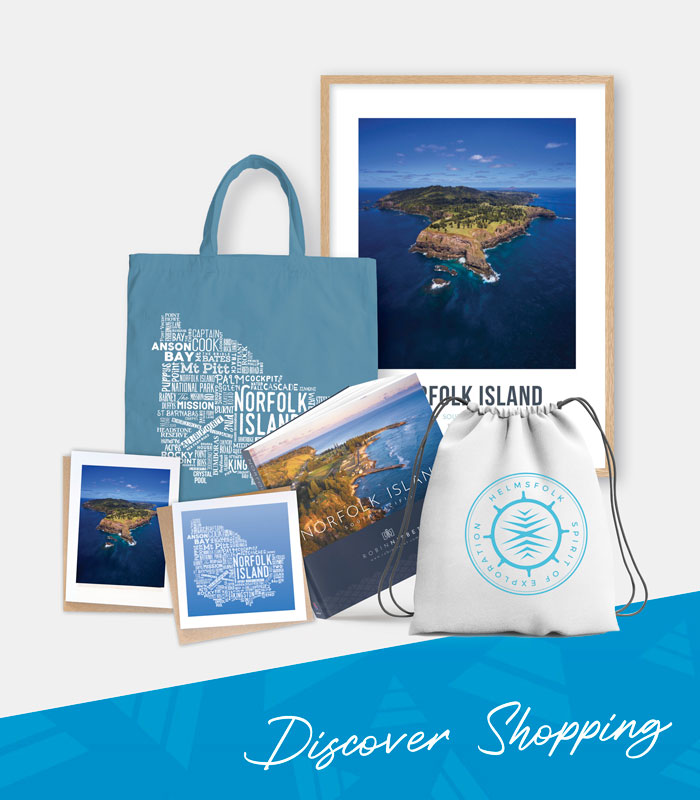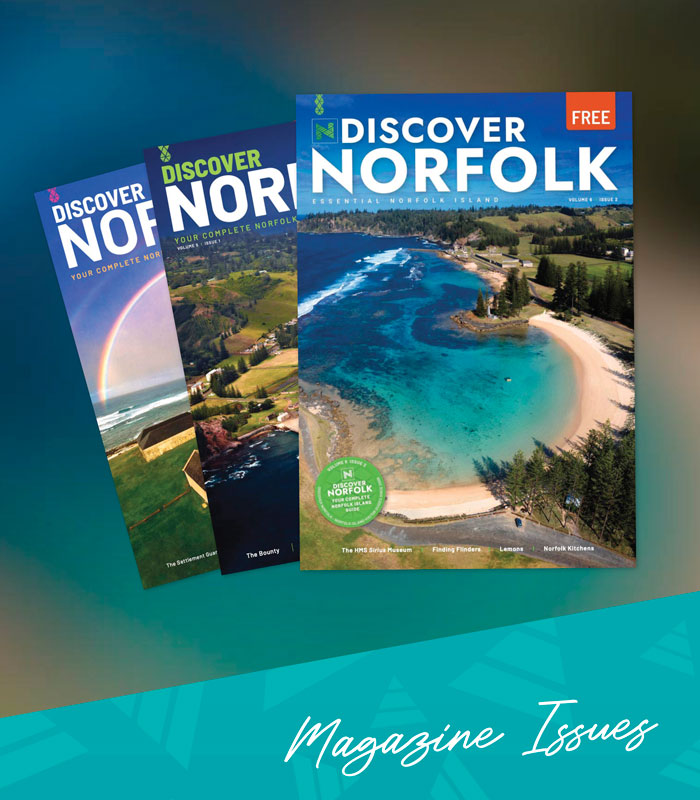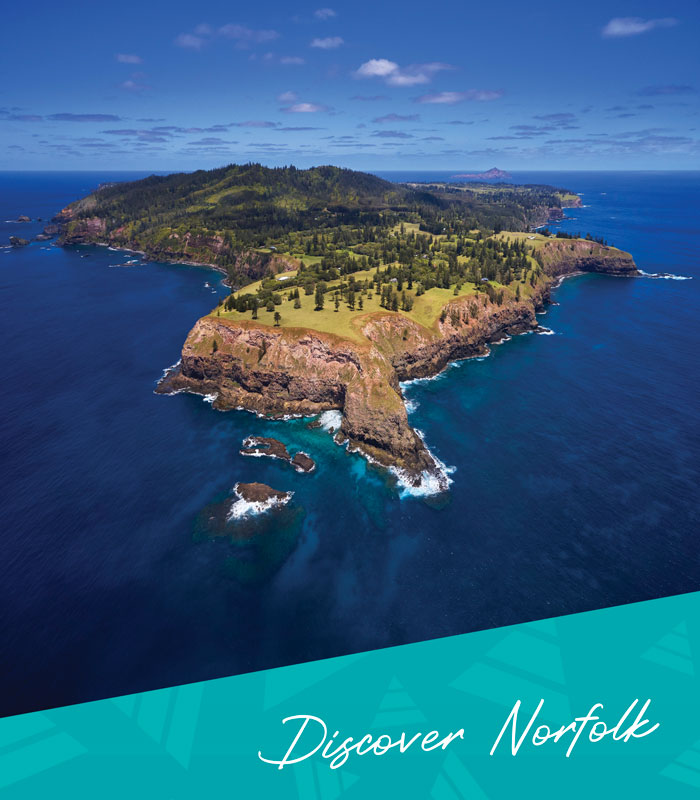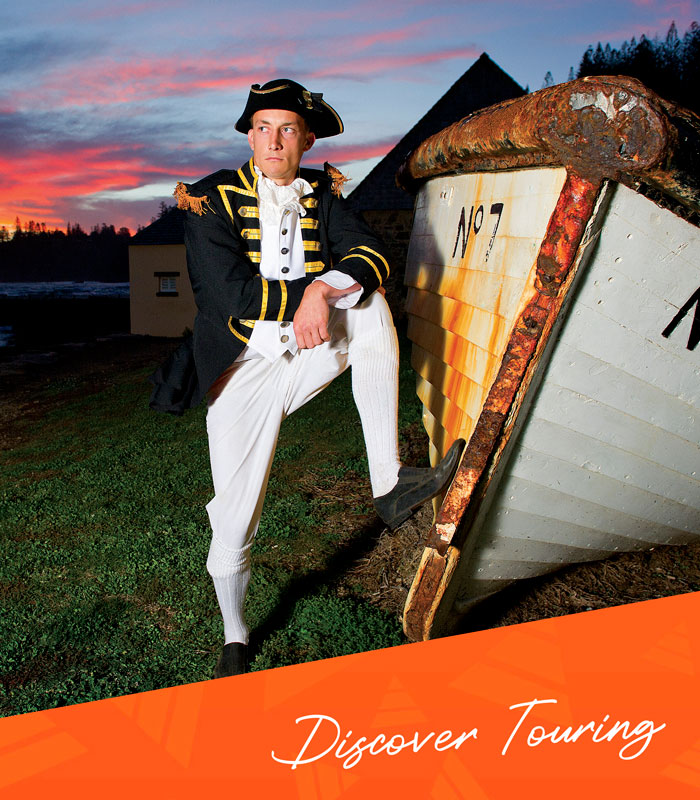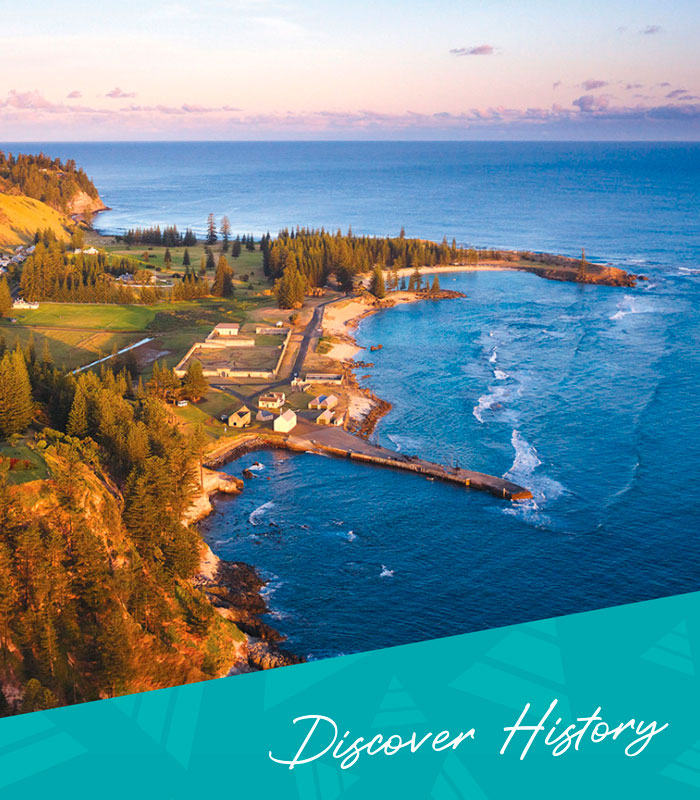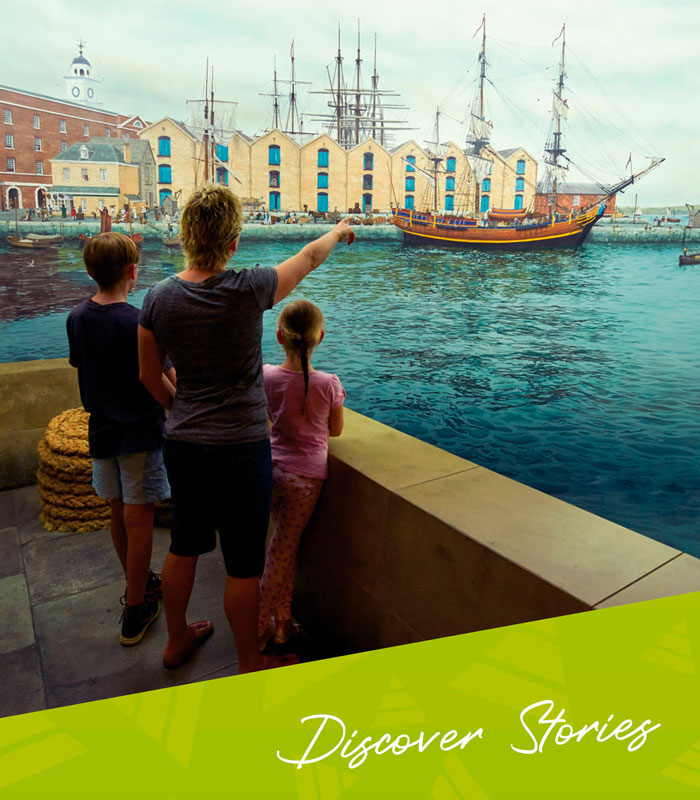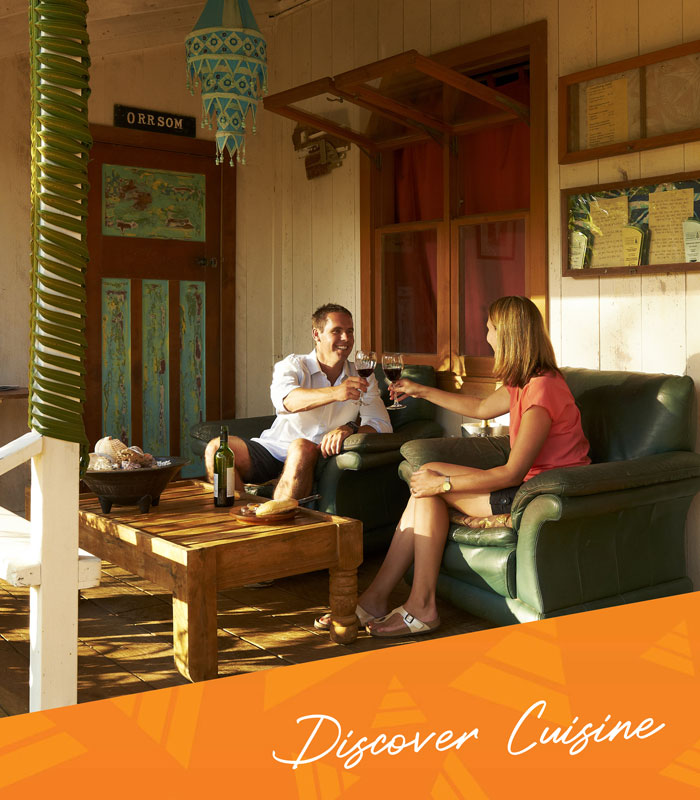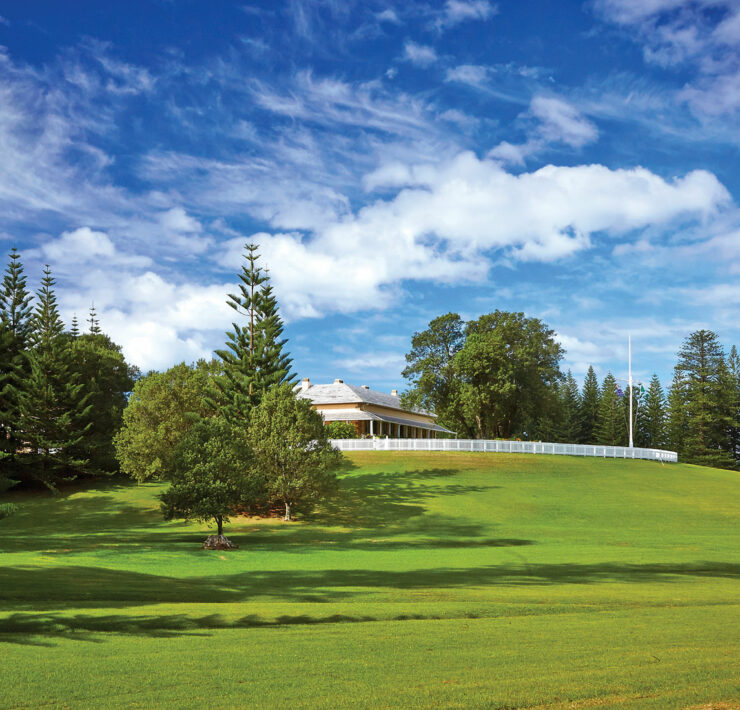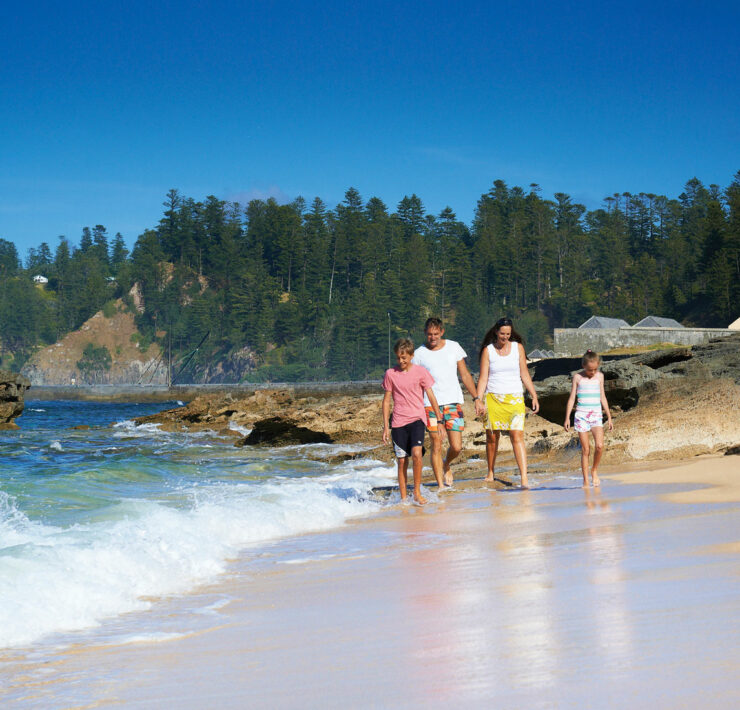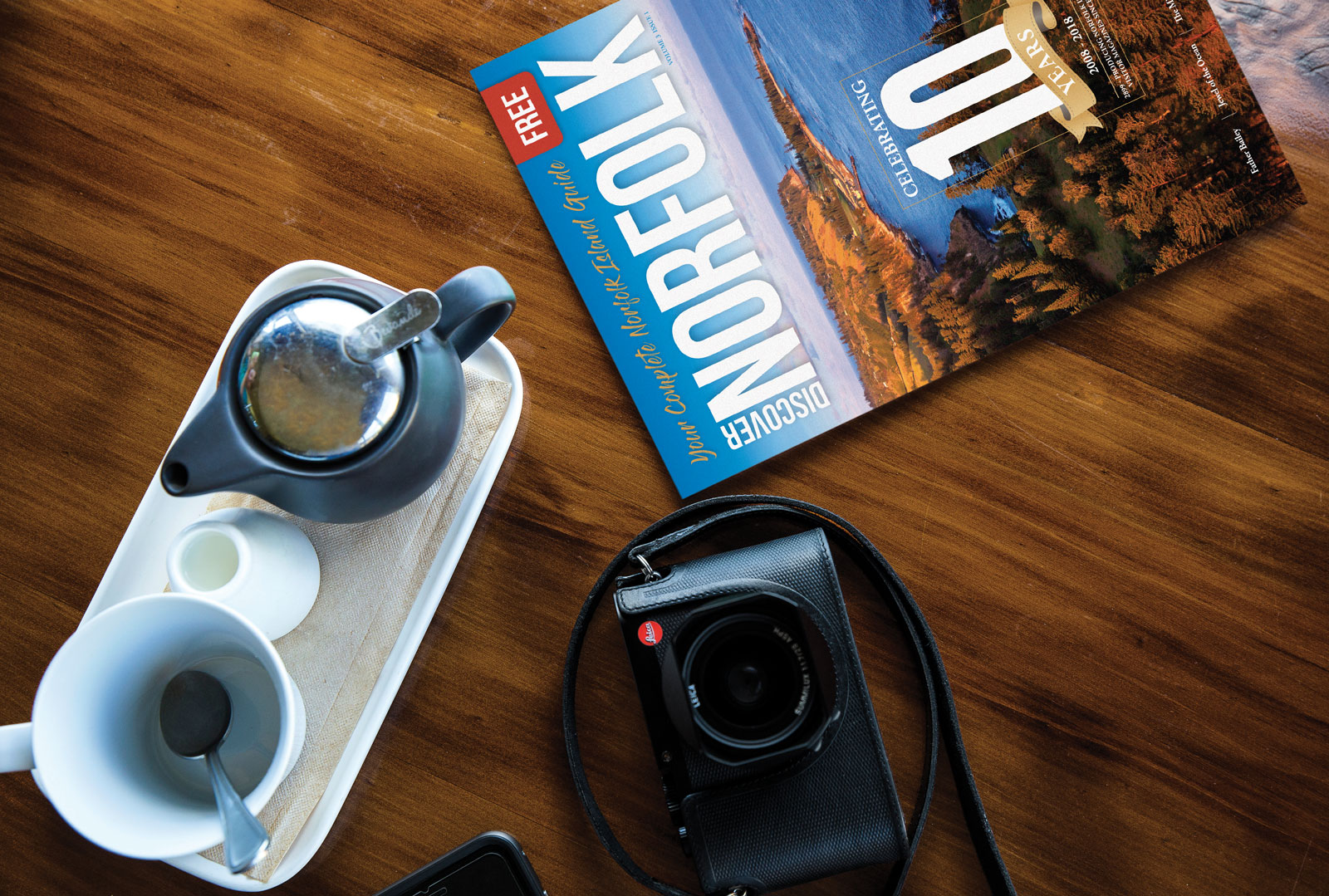Home » All Articles » Tapa Cloth & The Women of the Bounty
Tapa Cloth & The Women of the Bounty

On display in the Pier Store Museum are a heavy tapa mallet and a small deep brown piece of tapa that was made on Pitcairn Island in 1841. They sit alongside two other tapa pieces exhibited on Norfolk Island in 2008. Together these historical and modern pieces tell us the remarkable story of tapa making by the foremothers of this island, those original twelve women who left Tahiti in 1789 with the Bounty mutineers. The story also reveals its near loss as a skill and reclamation by four of their descendants.
Today most of us do not know, let alone can easily pronounce or spell, the names of those twelve brave Polynesian women: Mauatua, Teraura, Vahineatua, Toofaiti, Tevarua, Teio, Opuarai, Faahotu, Teatuahitiaa, Teehuteatuaonoa, Tinafanaea and Mareva. Instead we know them by the European names given to them by their husbands. One of them came aboard the Bounty with her Tubuaian partner, another with her Raiatean partner, others went willingly with their mutineer partners, but many were kidnapped. They mostly originated from Tahiti, but also Tubuai, Raiatea and Huahine and their names show that they had come from the elite in their homelands. Their surviving tapa pieces now provide us with a unique opportunity to get to know them.
Tapa, or ‘ahu in old Tahitian, is the fabric the women made from the bark of the paper mulberry tree (aute). It was an essential item for any community as it provided both clothing and shelter. Making tapa was the work of the women and their mallets or beaters were their tools of trade. Amidst what must have been the high emotion and confusion in hastily coming on board the Bounty these women made sure they brought tools for making tapa and aute cuttings ready for planting. This clearly shows the importance they placed on tapa making as an essential requirement in any future home.
The Bounty landed at Pitcairn Island in 1790. Unknown to the rest of the world the mutineers, Polynesians and their children settled the island in complete isolation. By the time Mayhew Folger on the whaleship Topaz discovered them in 1808 there was only one surviving mutineer living with the Polynesian women and their children. Folger reported that ‘These women manufacture a Cloth they all wear…’ and many subsequent American and British visitors also reported the style of the islanders tapa clothing. A print drawn and engraved by Lieut. Col. Batty from sketches made by Lieutenant Smith of H.M.S. Blossom, show George Young, his wife Hannah and men in the background all wearing tapa clothing. The Captain of the Blossom, recorded that the women wore tapa cloth made into a petticoat and mantle and that each family cottage had a smaller building attached to it in which the women made the cloth.
Pauline Reynolds is one of the women of today at the forefront of ensuring that the story and skill of tapa making is not lost and researching the lives of the twelve ‘Pitcairn foremothers’. Her book ‘Pitcairn Tapa’ details surviving tapas held in institutions around the world, their designs and the way they were made. Imagining the first years on Pitcairn after their arrival in 1789 she says ‘Throughout the first productiveyears and the dark years too, there was one constant. The sound of women. Women singing, dancing, cooking, nursing, birthing, chanting, weaving, loving, fighting, crying, planting, painting, praying, dyeing, dying, living. And the sound of beating. Beating out barkcloth and clothing their growing community. Fabricating,
weaving and defining a new culture, a new people’.
Tapa making is a very physical, demanding and noisy task. Strong arms and a strong back are needed. The women would have sung and worked with a rhythm to help them bring down their beaters with amazing precision in the exact same spot time and again. The grooves of the mallet left a mark then used to create desired patterns on the fabric. They were experts at their essential work. Gift giving is a strong Polynesian tradition and gifts of tapa cloth were often made to passing ships to Captains and their wives. Beautiful lengths of finely made cloth, complete coats, wraps and smaller sections of tapa have since made their way into collecting institutions around the world, together with a smaller number of tapa mallets. When some lengths of the cloth arrived in Europe or America, their value as an item of commerce meant that they were cut up into small pieces and individually given or sold. There are a number of these smaller cuttings in existence today.
The significance of the Pitcairn tapa had been lost to many of the institutions and museums that now hold them, however their place in history has begun to be restored thanks to Pauline’s work. In addition to producing her book, in 2010 she visited museums around the world identifying and documenting exquisite pieces kept largely in storage. Her work still continues. The piece on display in the Norfolk Island Museum was gifted by Mrs Stephen Christian from Norfolk Island in 1898 cut from a cloth that was made on Pitcairn in about 1841. In a hand written attached letter, W. Jeffery of Sydney says of the piece ‘It was brought to Norfolk Island by the grand daughter of Fletcher Christian…and daughter of Thursday October Christian’. She notes the rarity of the piece and that ‘Judge MacFarland and myself are the only persons in NSW who have been given this curiosity’.
When the entire Pitcairn population of 194 people relocated to Norfolk Island in 1856 onboard the Morayshire, not one of the women was wearing tapa clothing. However they were still making and wearing it right up until their departure as witnessed by a young officer on board who went onto the island and recorded ‘The young women were all dressed in a garment extending loosely from shoulders to heels made of tapa cloth and over this a short gown…The young women and girls dressed only in this long white garment with a wreath of everlasting flowers as their only head adornment’.
Perhaps the women who arrived on Norfolk Island didn’t continue tapa making and wearing tapa clothing as they now lived in a cooler climate, had strong Christian values and their closer contact with a western lifestyle meant much easier access to cotton and wool fabrics. Certainly we do not know of any tapa being made on Norfolk in those early days and there appear to be very few surviving examples held in the community today of the material that would have been brought from Pitcairn in 1856.
It is here that the tapa story returns to Pitcairn Island. Two groups, unhappy with life on Norfolk and homesick for Pitcairn, returned there in 1859 and 1863. Upon their return, the women once again harvested the aute plant, stripped the outer bark and began processing it until they took up their mallets and began to beat. The sound of their pounding and singing would have filled the valleys of Pitcairn once again.
However those sounds were finally stopped in the 1940s when Seventh Day Adventist Missionaries regulations banned its making. Adventism came to the island following a visit in 1886 by layman John I. Tay who spent five weeks teaching the Pitcairners the principles of the Adventist faith. Most Pitcairners since then have been members of the Adventist faith.
It may have been that the Pitcairn/Norfolk tapa making story ended here, however in 2007, Pitcairn Islander Meralda Warren became inspired: ‘the challenge of not losing that side of our heritage became too strong for me to let go’. The aute grew next door to her house so she started to begin learning how to make tapa. ‘After months of trial and error, I was finally satisfied with some of the pieces. I discovered how to make natural dyes from the doodwi bark and the smoke from burning the doodwi nut and the root of the nano. All this is very exciting for me, knowing that my foremothers were making tapa by this process 200 years ago’.
Together with Meralda two other Pitcairn descendants Sue Pearson from Norfolk Island and Jean Clarkson from New Zealand, began making tapa and art works on tapa. An exhibition of their work ‘Pitcairn Tapa by the ‘Ahu Sistas’ was held at the Norfolk Island Museum in 2008, and also included the launch of Pauline’s book. Meralda had a subsequent exhibition of her work at the Museum in 2011. On Pitcairn she has been teaching her nieces and nephews and other island children the craft of their foremothers.
Being in touch with those early pieces of tapa cloth made by some of the twelve original foremothers and their children and grandchildren, brings us in touch with those women themselves. Sue Pearson says ‘Through the ’ahu these women are revealing them-selves from beneath layers of time and misunderstanding’. Jean Clarkson says ‘For me it began with the discovery of a photograph of Pitcairn tapa in the British Museum proving that something tangible still existed from the time of our Polynesian ancestors. It’s wonderful that today Meralda is selling her tapa around the world.’
The story of tapa making on Pitcairn is one of a skill and tradition so nearly lost and now being reclaimed. Meralda, Pauline, Sue and Jean are the women of today ensuring that the tapa making skills of their foremothers are not lost to history or future generations.
____
Image Credit: Robin Nisbet
www.robinnisbet.com
____
Article content disclaimer: Article first published in YourWorld, Volume 02 Issue 02, 2012. Please note that details of specific travel, accommodation and touring options may be outdated. References to people, places and businesses, including operating days and times may be have changed. References to Government structure and Government businesses/entities may no longer be applicable. Please check directly with businesses and/or Government websites directly rather than relying on any information contained in this article before you make travel arrangements.


